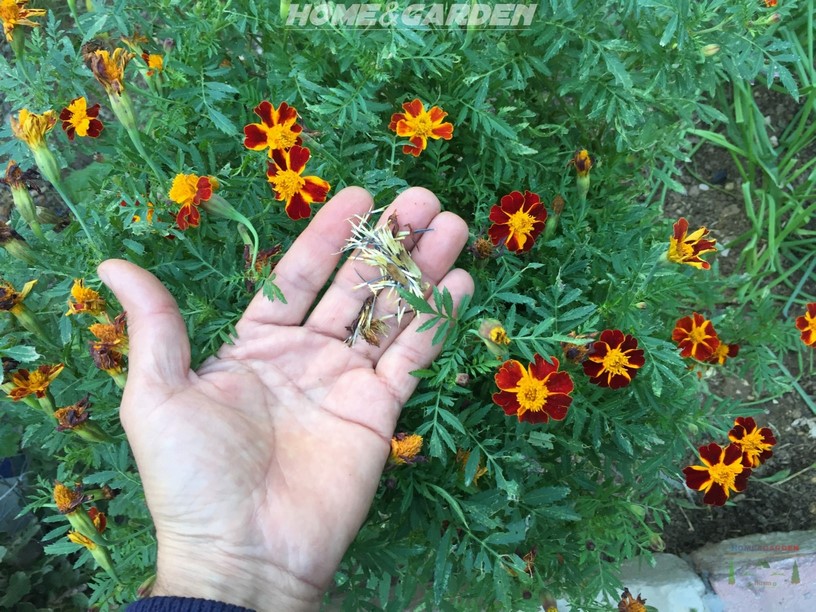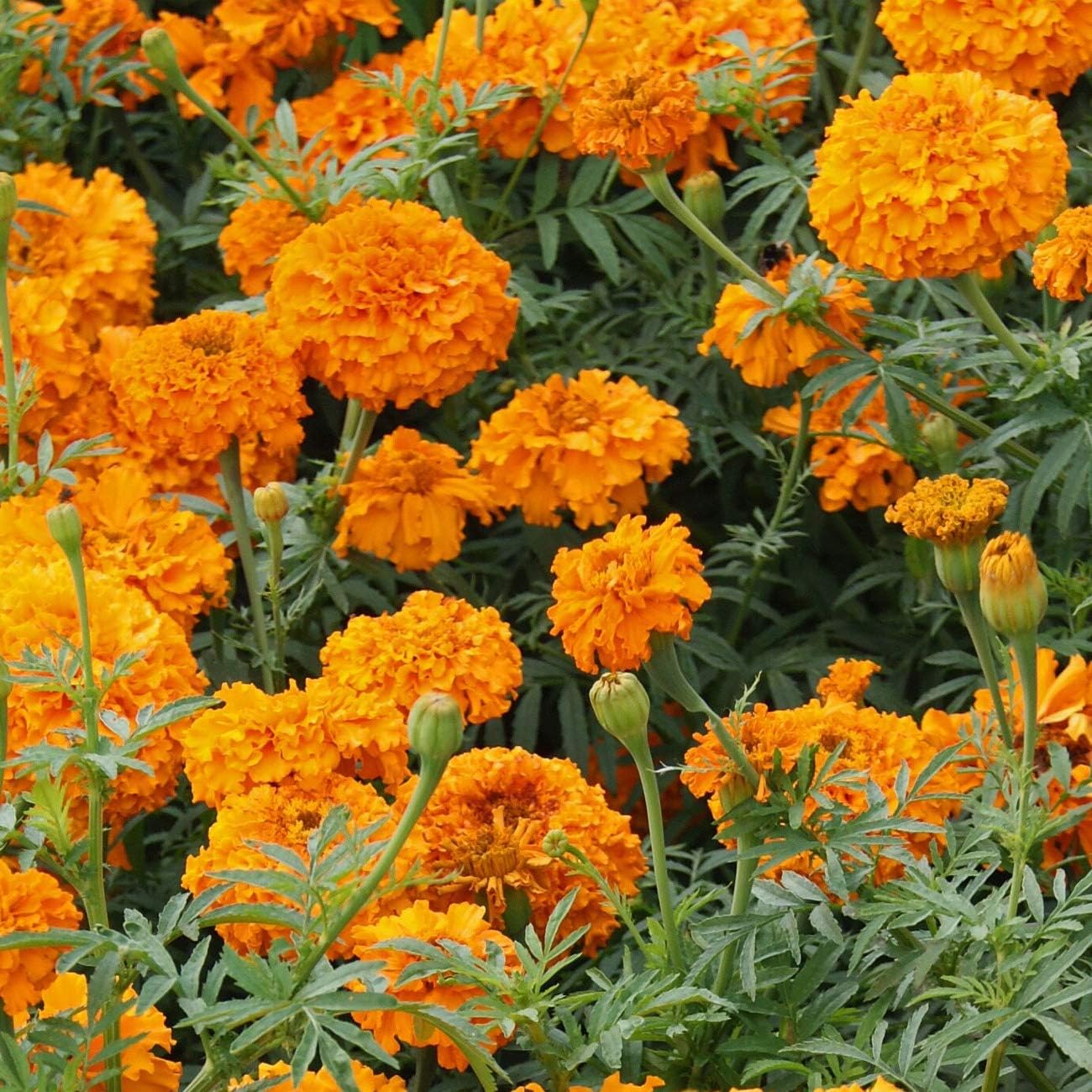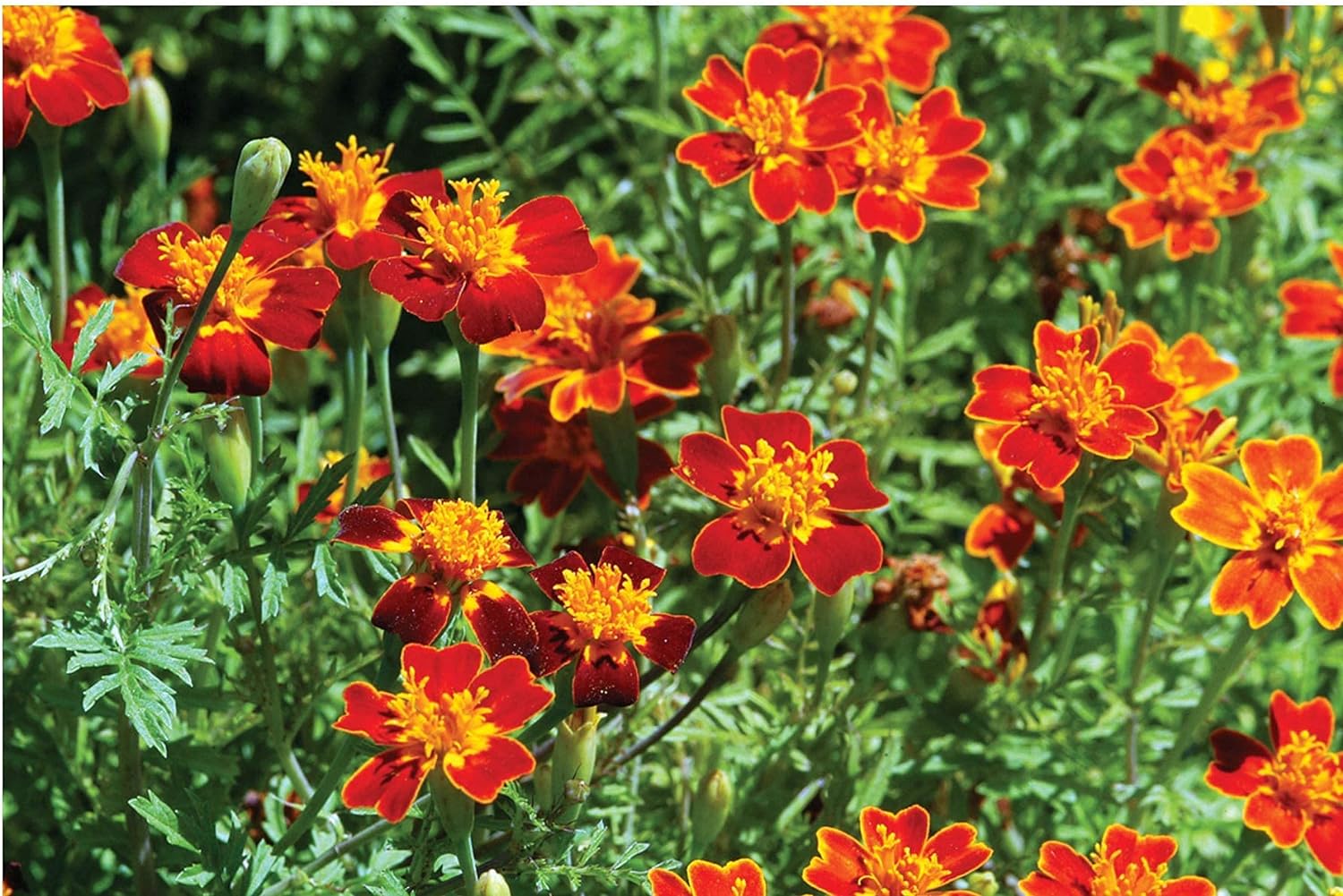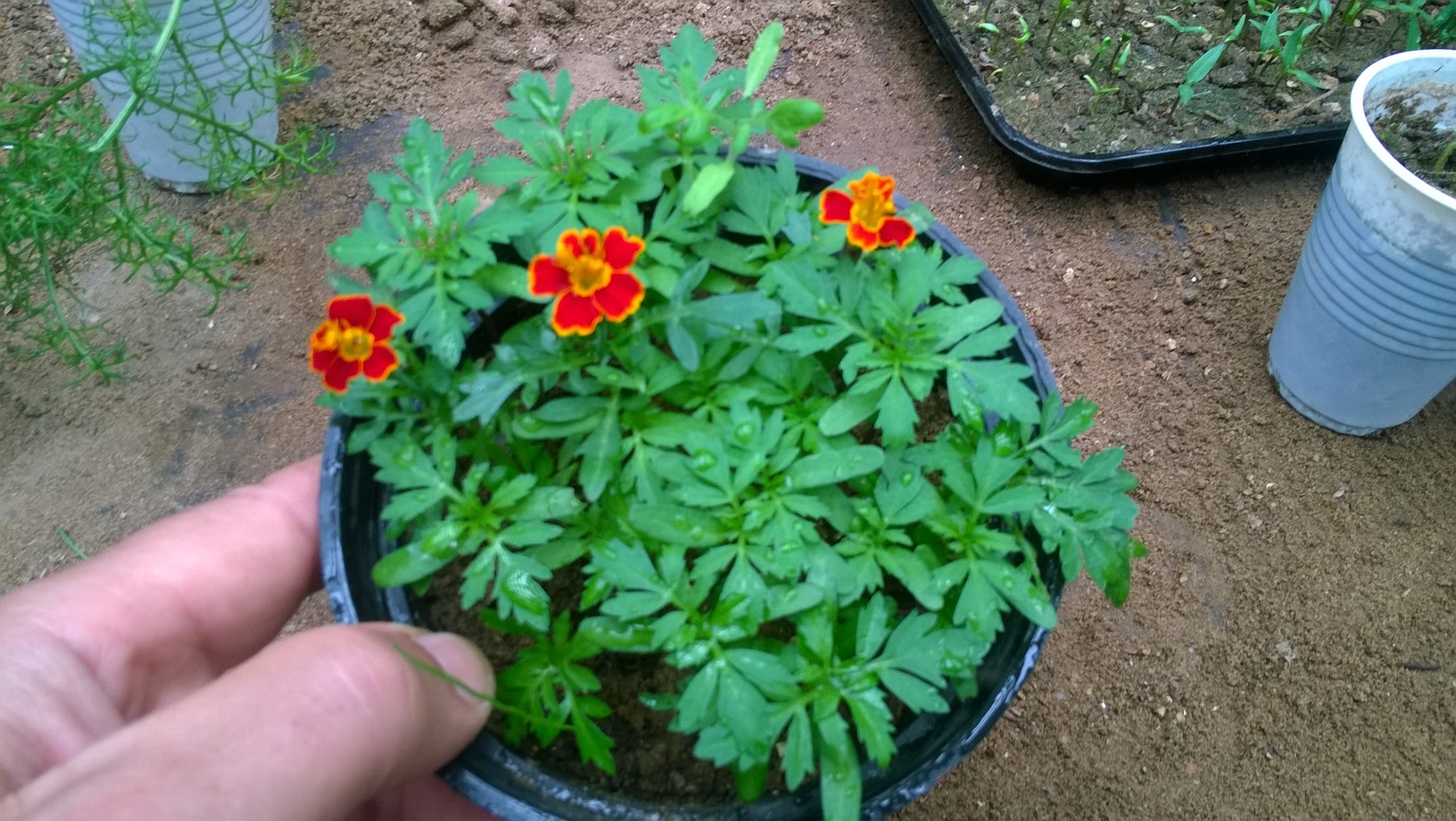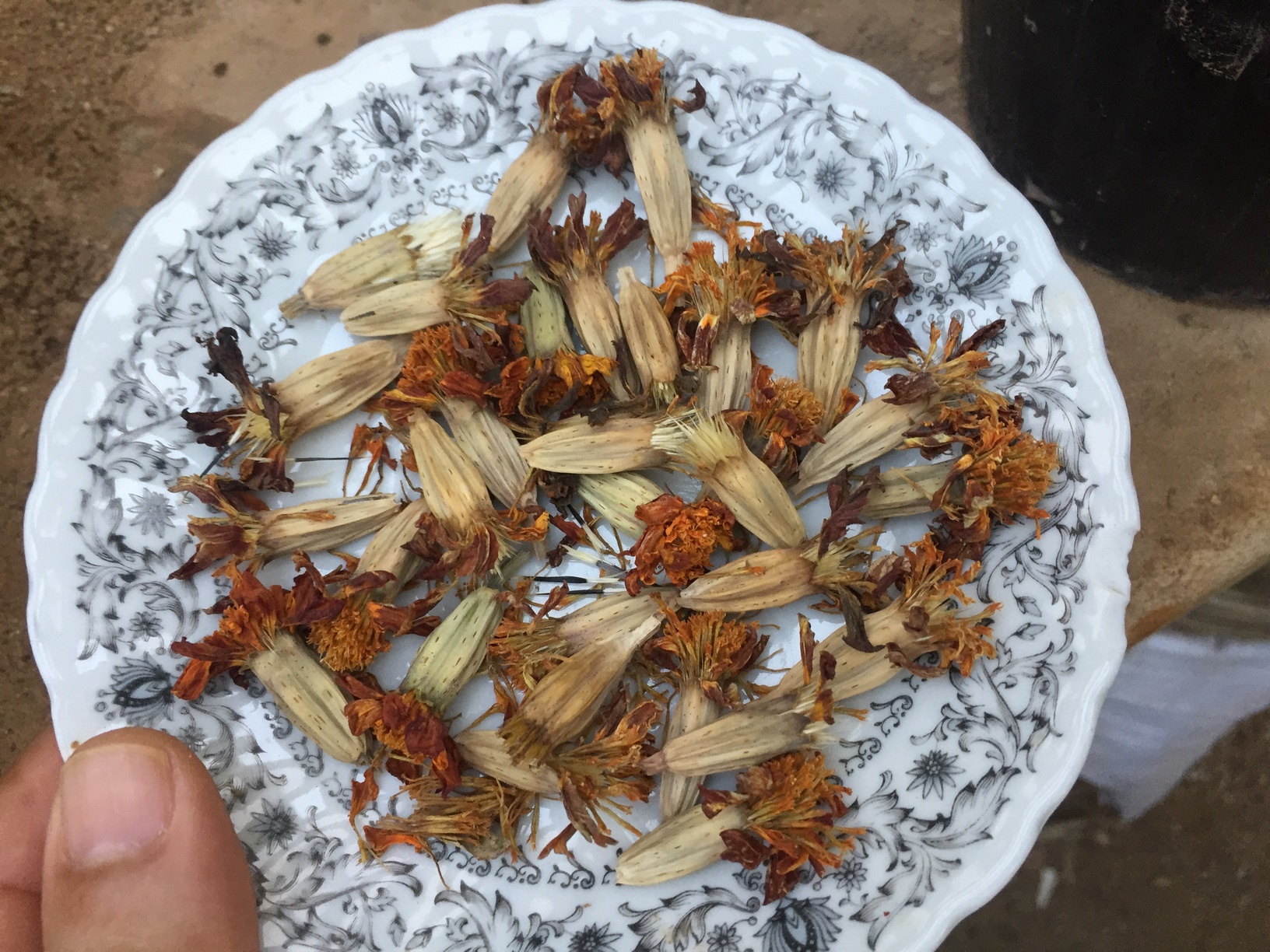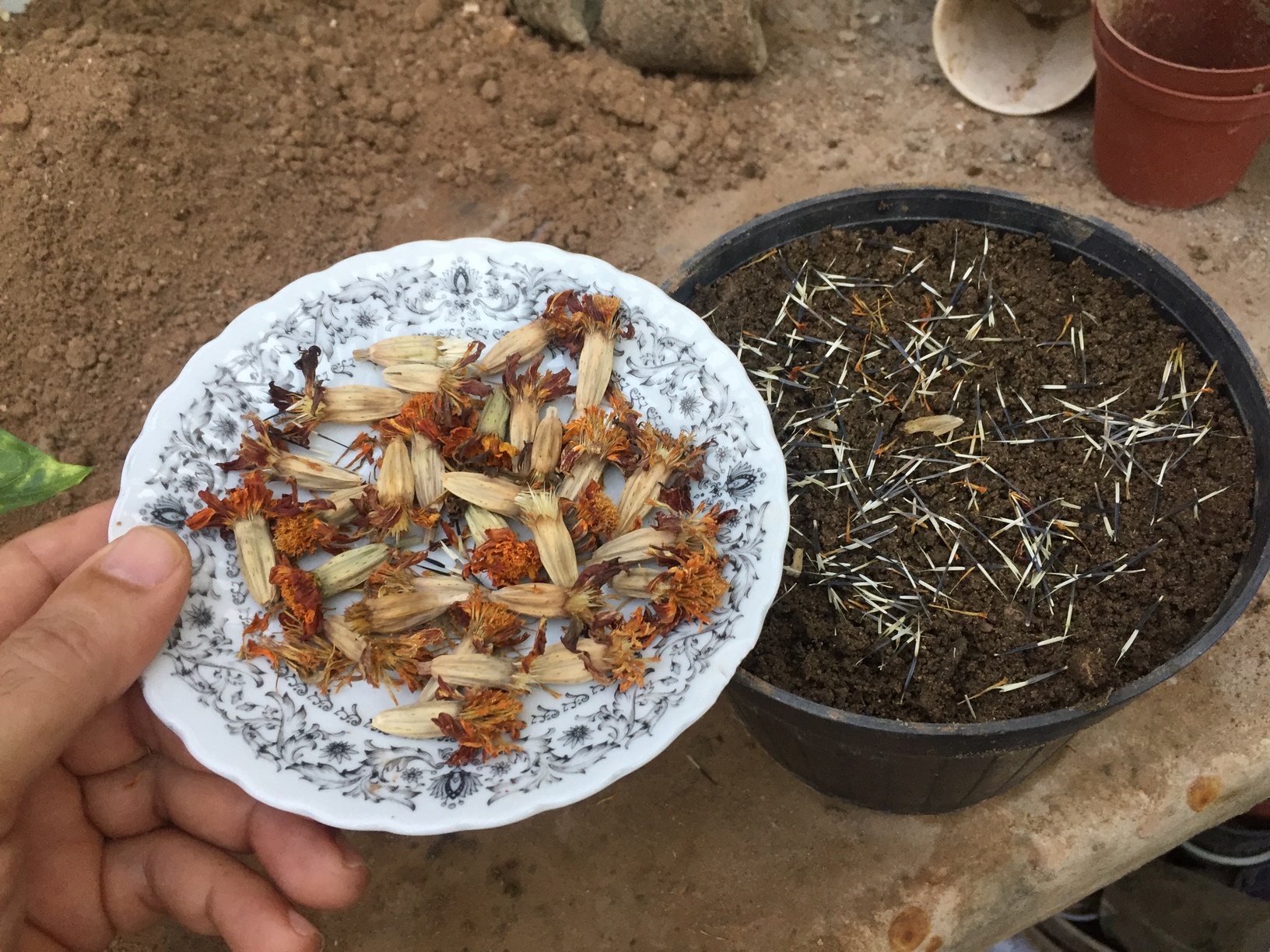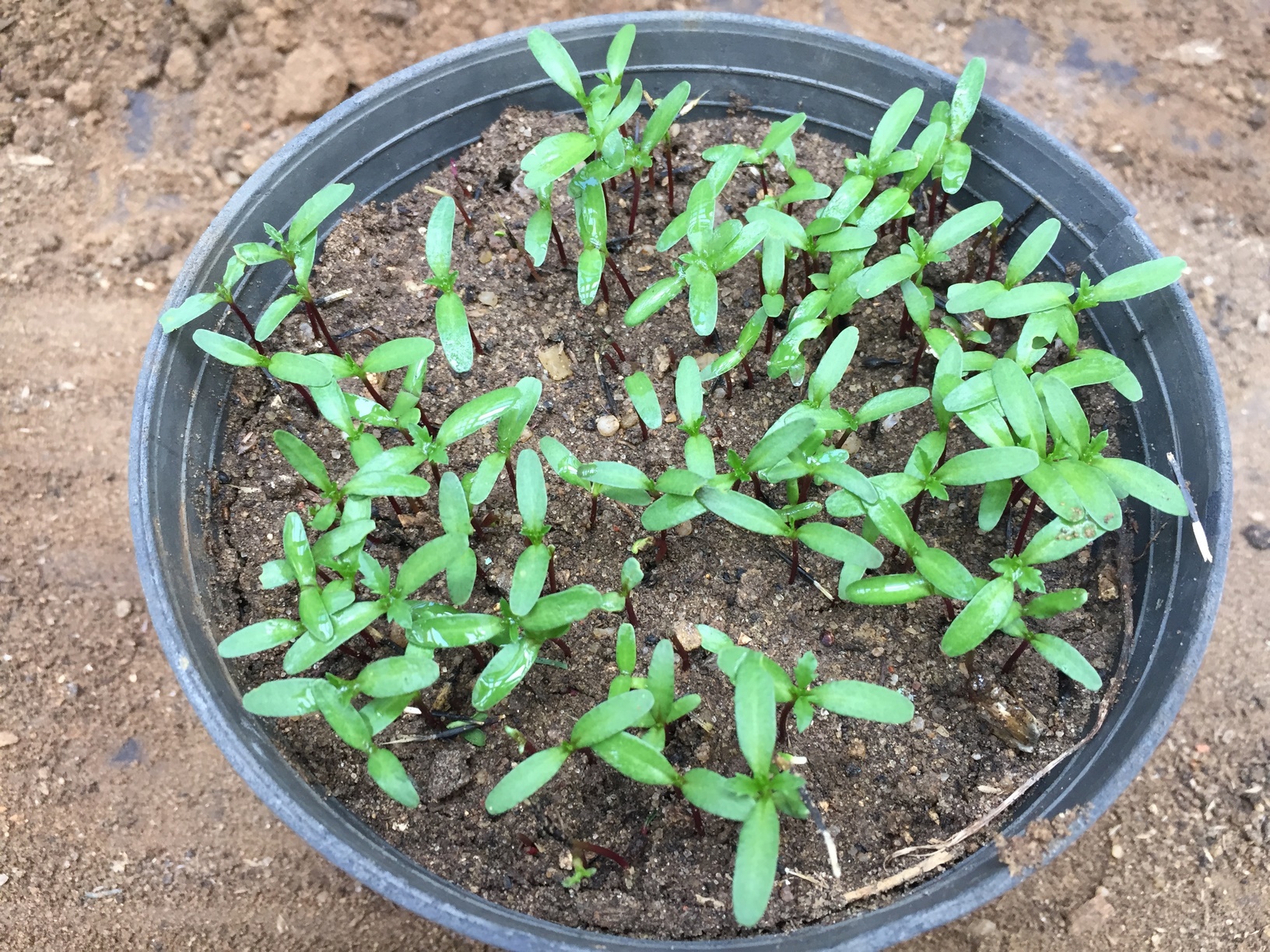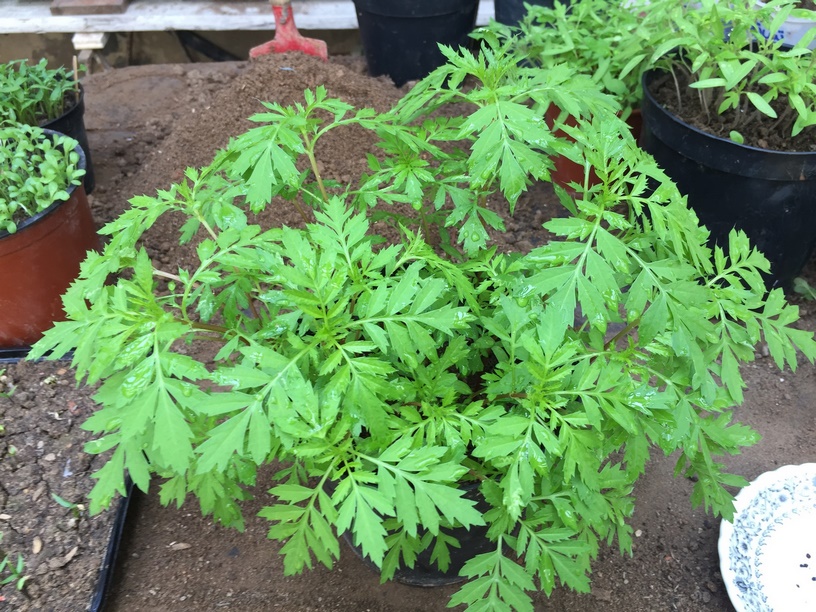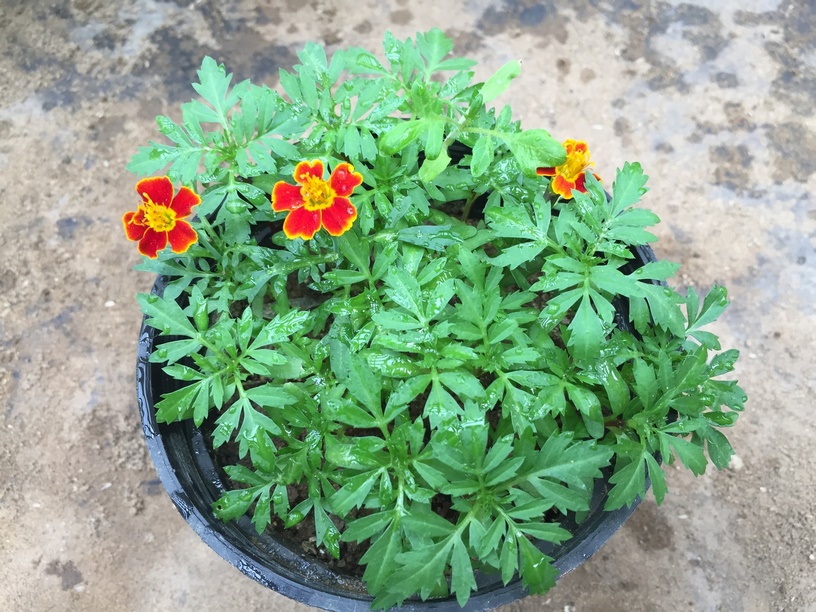Give your garden and outdoor living spaces a shot of steady, season-long color by growing marigolds. These popular annual flowers are a garden favorite because they are easy to care for, grow well from seeds, and attract pollinators. In order to give your plants a chance to grow from seed to mature, you need to start marigolds indoors during late winter, and transplant them outside once the temperatures are warm enough to support proper plant growth.
How To Start Marigolds From Seeds
There are four main groups of marigold species, and each of them produce variations in color and size.
Come in two basic varieties: “large-flowered” and “tall.” Large-flowered are fairly short, at between 12-14” tall, and they have very large blossoms (up to 3.5” inches in diameter). Tall African marigolds have small flowers, but can grow up to 3’ tall.
Come in two basic varieties: “large-flowered” and “dwarf.” Large-flowered are between 12-16” tall with large (up to 2”) flower blossoms. Dwarf French marigolds rarely grow higher than 12” and produce small flowers.
Triploid marigolds
Are a hybrid of French and African marigolds and are also known as “mule” marigolds because they cannot reproduce. They grow fairly tall and produce large (up to 2”) flowers.
Single marigolds "Tagetes tenuifolia"
They are quite different in appearance from other marigold varieties because their flowers have very simple, almost daisy-like flowers rather than the thick and bushy blossoms.
(Tagetes tenuifolia) These marigolds are edible. Heat Tolerant. Red Gem Marigold Seed produces bite-size flowers for use as edible garnish. Hundreds of petite flowers cover neat, low mounds of lacy foliage with a citrus scent. Long-blooming for beds, borders, and containers where it attracts beneficial insects, such as ladybugs, hoverflies, butterflies, predatory bugs, and parasitic wasps. Leaves of the plant are edible and are used as flavorful salad greens and garnish.
Also known as signet marigold. Edible Flowers: Use the flowers to dress up salads and desserts, or cooked in egg or rice dishes. Flavor is floral with hints of citrus and spice, and slightly bitter. Remove the petals from the flower base before consuming, as the base can be quite bitter. Ht. 10-12".
Starting Marigold Seeds Indoors
Marigolds are one of the most rewarding annuals flowers you can grow. They are low maintenance, fast-growing, repel pests, and they will provide you with bright, lovely continuous color until the fall frost. In order to be ready for planting outdoors in the spring, start growing marigolds from seed indoors about 50 to 60 days before the last frost date. You can have your marigolds well on their way to impressive outdoor blooms, by following these simple tips!
Every year I use my own marigold seeds. If you learn how to save their seeds, you won't have to buy new plants or seeds next year!
- Fill a plastic pot with potting mix or seed starting mix. It is preferable to use a good seed starting mix when starting seeds, rather than garden soil, as it will give the seeds an extra nutritional boost and make it easy for young seedlings to grow.
- Sow the seeds in the soil. Avoid sowing many seeds in the same pot. Sowing too many seeds in the same spot will prevent rapid growth for the seedlings.
- Cover the seeds lightly with some soil, at least 1-2 mm deep.
- Water the pot very lightly to ensure good seed–to the mix contact. You can use a spray bottle filled with clean water to do that.
If you have leftover seeds, you can save them for the next growing season. Seal them in an airtight container such as a mason jar in a cool, dry place.
$ads={2}
Marigold seeds stay viable for at least a year, and most will be viable for two years.
Transplant each seedling soon into its own pot once they start producing a second set of leaves. Keep the seedlings indoors in a location where they will receive at least six hours of sunlight each day until the last frost has passed.
Harden off marigolds seedlings before transplanting outdoors. About 7 days before planting your plants outdoors, help acclimate them to temperatures, sunlight, and wind. This is the process of hardening off, or gradually acclimating your new plants to outdoor conditions. These plants have spent their short lives in a warm, sunny, protected place and won't fare well if you don't expose them slowly to the elements. Once, the frosts have passed, plant your marigolds plants out into a sunny position in a well drained soil, and enjoy them!
Watch How to Start Marigolds Indoors Video
I recommend starting your marigold seeds indoors to get a jump on the season. It's so easy!
In conclusion, embarking on the journey of starting marigolds from seeds indoors is not just about growing flowers; it's about cultivating a connection with nature and witnessing the miracle of life unfold in the comfort of your home. As you patiently nurture those tiny seeds into vibrant seedlings, you are not just a gardener; you are an architect of beauty, a co-creator with the earth. Remember, the process is not just about the destination, but the joy found in every step. From selecting the seeds to watching the first green shoots emerge, each moment is an opportunity to appreciate the wonders of nature and the resilience of life. Your indoor garden becomes a sanctuary, a place where hope and growth thrive. So, grab your gardening tools, gather your enthusiasm, and dive into the world of marigold cultivation. As you witness your indoor garden transform into a sea of golden blooms, you'll realize that the true magic lies in the journey itself.
Pin This? Pin it for Later!
Affiliate Disclosure: In transparency and compliance with legal guidelines, please be aware that some of the links on this site are affiliate links. These are carefully chosen products that I have personally used, tested, and genuinely recommend. When you click and make a purchase through these links, I may earn a small commission, at no additional cost to you. This commission helps support the maintenance of this site, allowing me to continue providing valuable content and recommendations. Rest assured, my priority is to offer authentic and reliable information, and I only affiliate with products that align with the values and standards I uphold. Your trust means everything to me, and I appreciate your support. If you have any questions or concerns, please feel free to reach out. Thank you for being a valued part of our community!{alertInfo}

